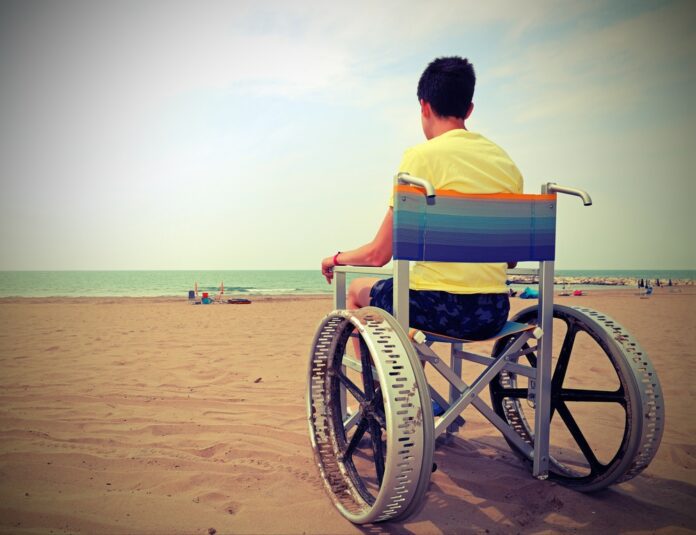Overview Of Amyotrophic Lateral Sclerosis
Amyotrophic Lateral Sclerosis (ALS) is a degenerative condition that affects the nerve cells within the brain, spinal cord, and brain stem. These areas control a person’s voluntary muscle movements. ALS is also called Lou Gehrig’s disease, after a famous person who was diagnosed with the disease.
Commonly Associated With
Upper and lower motor neuron disease, Lou Gehrig’s disease, and Motor neuron disease
Causes Of Amyotrophic Lateral Sclerosis
One in every ten ALS cases happens due to a specific genetic abnormality. The other 9 out of ten cases have an unknown cause. The prevalence of ALS is around 5 in 100,000 people worldwide.
When ALS occurs, the person’s motor neurons (nerve cells) degenerate and die. Because of this, they can no longer send the proper signals to the person’s muscles. This then leads to muscle twitches, muscle weakening, and an eventual inability to move the legs, arms, or whole body. The condition worsens with time, and eventually the muscles in the chest region will stop functioning. This makes it difficult or impossible for the person to breathe on their own.
Risk factors for developing the disease include family members with the hereditary form of the disease and past military service. The mechanism of the connection with military service is currently unknown. It’s hypothesized that it may happen because of exposure to certain toxins.
Symptoms Of Amyotrophic Lateral Sclerosis
Most who develop ALS do not actually experience symptoms until after the age of 50, although they can occasionally develop in younger people. Those with ALS will suffer from a gradual loss of muscle strength and coordination. Eventually, this will worsen until they can no longer perform even simple movements such as getting out of a chair, going up a set of stairs, or even the action of swallowing in advanced cases.
Muscle weakness will typically start with the legs or arms, or it may affect the ability to swallow or breathe. As ALS progresses, more and more muscle groups will then begin to lose strength and function.
However, a person with ALS will not have any symptoms that affect their senses – sight, hearing, sense of smell, sense of taste, and sense of touch. Most do not experience cognitive decline, although in a few cases dementia occurred.
Muscle weakness usually begins in one location, and then worsens with time and spreads, then leading to the following:
- Difficulty swallowing – including choking easily, gagging often, or drooling
- A head droop due to neck muscle weakness
- Difficulty breathing
- Voice changes, such as hoarseness
- Difficulty lifting things, walking, and climbing stairs
- Speech difficulties, such as an abnormal or slow speech pattern, or a slurring of words
Other symptoms can include:
- Specific types of muscle contractions (fasciculations)
- Muscle stiffness (spasticity)
- Depression
- Muscle cramps
- Unintentional weight loss
Exams & Tests
A health care provider will examine the patient and then ask about their symptoms and past medical history.
The physical exam can reveal:
- Weakness, which often begins in one area of the body
- Difficulty controlling outbursts of laughing or crying
- A clumsy or stiff walking pattern
- Decreased or increased reflexes at the joints
- A loss of the gag reflex
- A twitching of the tongue (a commonly seen symptom)
- Abnormal reflexes
- Muscle tremors, twitching, spasms, or a loss of muscle mass
Possible diagnostic tests include:
- An electromyography to pinpoint which nerves or muscles do not function properly
- Swallowing studies
- A head CT or MRI, used to rule out other possible conditions causing similar symptoms
- A breathing test will check the lung muscles for defects
- Genetic testing, to determine if there’s a family history of ALS
- Blood tests to rule out other possible conditions with similar symptoms
- A cervical spine CT or MRI to make sure there isn’t disease or injury to the neck, which can mimic ALS symptoms
- A spinal tap (also called a lumbar puncture)
Treatment Of Amyotrophic Lateral Sclerosis
There is no current existing cure for ALS, although some medications may help to slow the symptoms and slightly lengthen the person’s life expectancy.
These medications include:
- Edaravone (also called Radicava)
- Riluzole (also called Rilutek)
Additional treatments meant to control symptoms can include:
- Feeding tubes: Those with ALS tend to unintentionally lose weight. ALS itself often increases the need for calories to sustain the body. However, at the same time, the person often struggles to swallow food without choking, making eating extremely difficult. They may need a feeding tube to eat, which is placed directly into the stomach.
- Those with ALS may need medication for depression. It is also recommended that they discuss their wishes regarding DNR status and artificial ventilation as soon as possible.
- Various ventilating types can help with breathing, including those used only at night, and constant mechanical ventilation for those who need it 24/7.
- Trihexyphenidyl or amitriptyline can be used for people with difficulties swallowing their own saliva
- Physical therapy, the use of braces or a wheelchair, rehabilitation, or other measures may be necessary to help with muscle function and the general health of the person.
- Baclofen or diazepam can be used for muscle spasticity (stiffness) that interferes with the person’s daily activities



